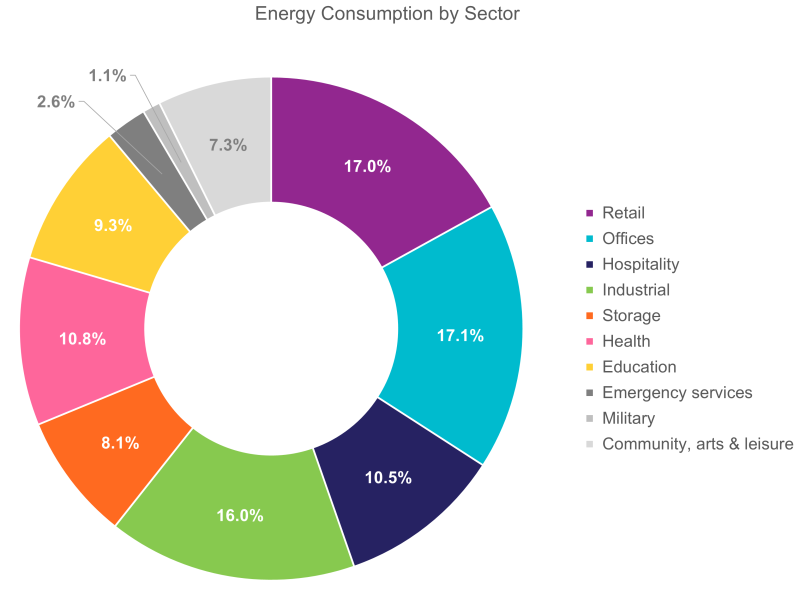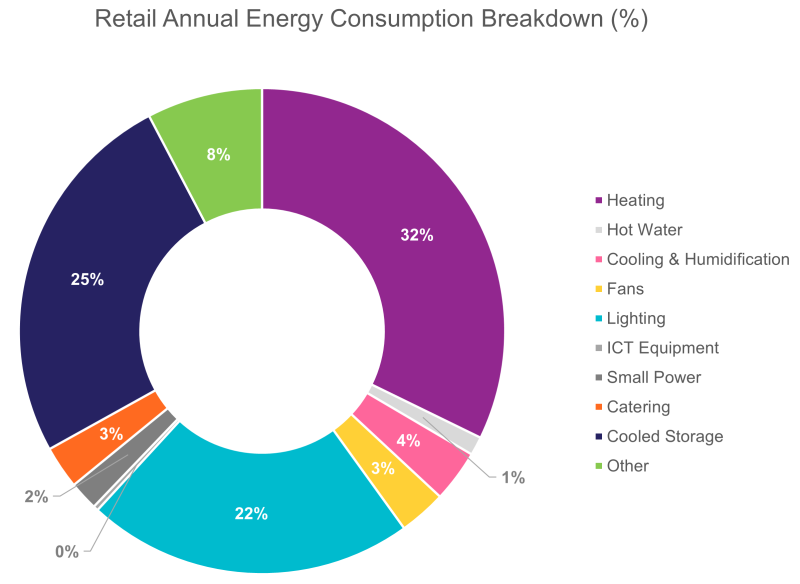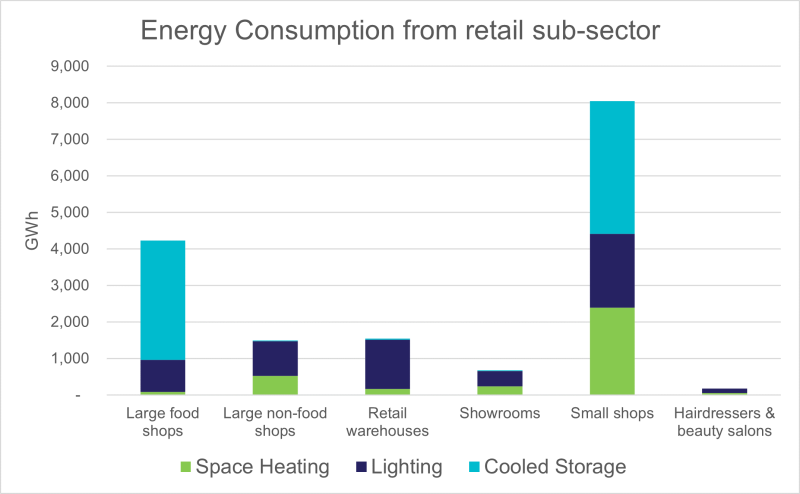5.1
Emissions overview
The Building Energy Efficiency Survey (BEES) was released by BEIS in 2016, and reports on non-domestic building stock in England and Wales. Although the source data is now five years old, this the most recent and comprehensive published inventory of retail building stock and associated energy use.
The BEES reports that retail consumes 7,330 GWh/year (17.0% of the total non-domestic building stock energy), on par with ‘Offices’ (17.1%). However, because ‘Storage’ includes retail cold stores and warehouses, and ‘Offices’ will include some retailers’ premises, overall retail is the largest energy consumer.

Figure 5.1a: Energy consumed in the UK by sector
Within retail, heating, internal lighting and cooled storage (or refrigeration) collectively account for 79% of energy consumption. In terms of energy source, it also highlights that the vast majority of the sector’s site emissions are from electricity (84%).

Figure 5.1b: Energy consumption by use in the retail sector
Between different retail premises, the report also shows the split of energy consumption – see Figure 5.1c – with small shops representing the highest demand.

Figure 5.1c: Energy consumption by retail building type
A crucial factor that can limit opportunities to cut site emissions is the party in control of building management and improvement. 42% of retail respondents to the BEES owned the premises they occupy, whereas 58% rented.[22] The emissions reduction measures available to retailers that own premises can be very different from those available to lease-holders. Landlords must comply with Minimum Energy Efficiency Standards for non-domestic properties, but relatively low minimums and provisions for exemptions leave a significant gap for retailers aiming to adopt industry-leading efficiency and renewable energy technology. Without financial support or permission from building owners, retailers may be unable to pursue some site decarbonisation measures.
[22] Building Energy Efficiency Survey (2014-15). BEIS. Excluding the proportion of respondents that were not asked which category they fall into